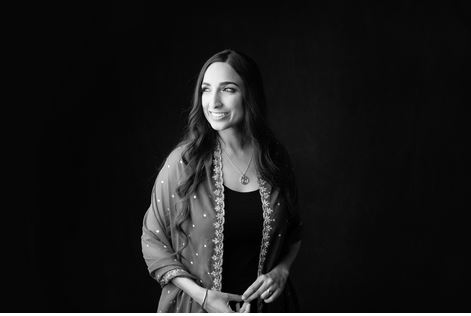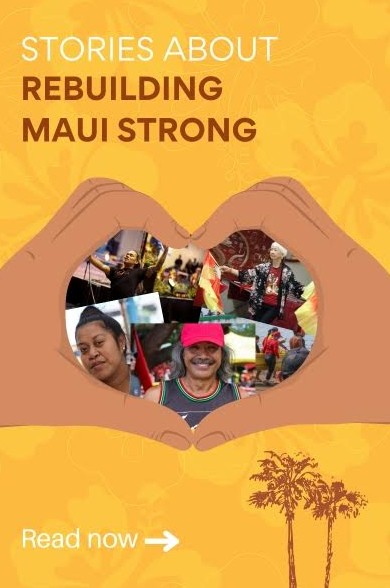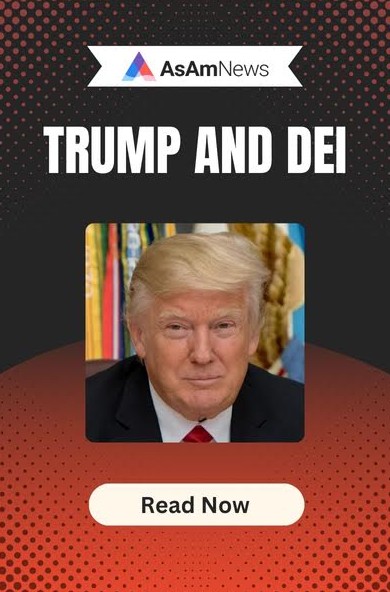By Shree Baphna, AsAmNews Staff Writer
Valarie Kaur is a renowned Sikh American activist, lawyer, author, and filmmaker. She has touched the lives of many through her commitment to upholding the stories and experiences of her community and those of others, who may not have a voice or platform to do so.
Valarie’s Revolutionary Love project is one that stands out from all other activist campaigns because of its epiphanic motto: “The future is dark. What if this darkness is not of the tomb, but of the womb? What if this is our greatest transition?”
I had the immense pleasure of interviewing Valarie in honor of the release of her new book, ‘See No Stranger’. However, what I thought was going to be a very straightforward interaction with her, did not occur at all. Instead, Valarie told me a story. All of a sudden, I became a young girl again, listening wide-eyed and awestruck.
Here is how her journey to writing See No Stranger began:
My grandfather sailed from India to the United States by steamship in 1913. He was one of the first to ever come from South Asia. And when he arrived at his port of entry- San Francisco- the immigration officials took one look at his beard and turban and took him and the other Punjabi laborers on the ship to Angel Island where they were incarcerated for months. Ellis Island, by contrast, was on the East Coast as a beacon of welcome for European immigrants who could assimilate by calling themselves ‘White’. Angel Island was where many immigrants were detained or deported. My grandfather would have been deported if it weren’t for a lawyer, a White Christian man, who saw my grandfather as a brother instead of a foreigner or a suspect. He helped free my grandfather on the Christmas Eve of 1914. My grandfather made his way down California and began to farm the land in the central valley. He worked in a field for pennies a day and slept in old crates at night to keep himself safe from the snakes in the barn.
Nearly a century later, I was a college student, watching the Twin Towers fall and feeling the horror stuck in my throat. I saw a man with a turban and a beard on the TV screen and realized that our nation’s new enemy looked like my family. Even though my family had lived and farmed in the US for a century, it was difficult to hear and receive the news of hate violence breaking out on the streets against Muslim Americans, and against my community, Sikh Americans.
Then on September 15th, I got a phone call from Arizona, telling me that Balbir Uncle had been killed. Balbir Singh Sodhi was a Sikh American father, standing in front of his gas station in Mesa, Arizona, preparing to plant flowers, when a pick-up truck swung around the corner. Five shots rang out, and Balbir Uncle died where he fell. Balbir Uncle was the first person killed in hate violence after 9/11- the first of dozens. And yet, his story- our stories, our community’s anguish- barely made the news.
I was desperate, distraught- wanting to do something. Yet, when I found out about his murder, I ran to my room and locked myself in there. I stayed in my pajamas for days. I didn’t want to come out and face a country that was attacking and threatening my community. It was so overwhelming and confusing.
I remember looking at my bookshelf, wishing I could escape. I was a student of divinity, law, race, and ethics, but I pulled down Harry Potter. I lost myself in its world while the nation outside was on fire. Harry Potter is a story where the young people had magic to wield against the Dementors and the Dark Arts. The adults in their world wouldn’t or couldn’t. In that way, each of us has a particular magic that is all our own to wield. I saw that I had a camera, I had a list of questions and a beat-up car. I just knew there were stories out there that needed to be chronicled.
I took a leave of absence from college and began crisscrossing the country with my camera, capturing these stories on film. We- my cousin and I- went from city to city, capturing these stories, sometimes when the blood was still fresh on the ground. During our journey, my cousin and I were the subjects of racist slurs, and I began to see myself through the eyes of others- as a suspect, as a terrorist.
I flew to Punjab, India, to visit the widow of Balbir Uncle- Joginder Kaur- who had been living in India while her husband worked in the US. I arrived at her doorstep with a long list of questions. Auntyji was wearing white, the color of mourning, when I saw her. Every time I said her husband’s name, she would start to weep. So, I took my list of questions, crumpled them up, and threw them away. I sat with her, I wept with her, but I just mustered one question- “What would you tell the people of America?”
I was expecting despair or reproach. Instead, she said “Thank you. Tell them ‘thank you.’ When I went to America for my husband’s funeral, thousands of people came to weep with me, to care for me, to love me. Thank them for their love.” That moment changed my life. I realized that while the nation did not know Balbir Uncle’s name, the local communities told his story so that other faith communities could show up and weep with this widow. Violence was not stopped, but this did enable the family and the community to go on. This was the first witness of revolutionary love. So, I went back to campus, and I wrote an honors thesis of the stories I collected. I sent the proposal off when I graduated.
I received rejection letter, after rejection letter, after rejection letter. But, because I saw the power of our stories to move people, I kept writing the stories and living the stories. Balbir Uncle’s murder turned me into an activist, as was true for many Sikhs and Indian Americans who were in college at that time. That one step, that one choice, to take the leap, and go off chasing those stories led to my whole life.
When I look back, I can say that was the beginning of the film that we made- ‘Divided we Fall’- and that’s why I went to law school. Time passed, and the hate and state violence went on, two decades of war went on. I found myself at the shores of Guantanamo, capturing stories of Muslims detained indefinitely. I found myself at the sites of mass shootings, from Oak Creek to Indianapolis, capturing the stories of communities in the face of White supremacist violence. I found myself in supermax prisons, trying to tell the story of the costs of mass incarceration, I found myself in the midst of protest and in the middle of police brutality, as law enforcement tried to stifle our voices of dissent. I kept living and writing these stories.
Every year and two, I would send out a new book proposal, until finally, 2016 election season happens. Hate violence is skyrocketing. Now, I am no longer a college kid. I am a mother. I have this existential crisis- what was it all for? All this advocacy, all these films, all these stories? I thought we were making the nation safer for the next generation.
I used to think of progress as linear, and then I had my own babies and I realized the nation was sliding backward, and everything felt so dark. If you take colonization and slavery as the true start of history for the United States, what our communities have survived over the past 20 years is not an aberration. It’s a continuation of what Black, Indigenous, and Brown people have had to fight for on this soil, for centuries.
And so, what has given me nourishment is sitting at the feet of Black mothers, Indigenous mothers, and movement leaders of the past, and hearing about how they have found the courage to go on. Even though they know they cannot protect their children against White Supremacy, they can give them the tools to find resilience and bravery in the face of it. They can insist on love in the face of oppression. Every time we are in the midst of a new crisis, I have seen more people awake and standing by our side. I couldn’t even imagine “Stop Asian Hate” as a hashtag 20 years ago. Every turn through the cycle, there is a little more room for dignity and solidarity, because more and more of us are awake and standing arm in arm. Here is the thing- I don’t know how many more turns of this cycle it is going to take before we birth an America where we are all safe and free. The labor for justice will go on after we die. We may not live to see the fruits of our labor.
Then, this question came to me, and I kept asking myself this question every day- the future is dark, what if this darkness is not the darkness of the tomb but the darkness of the womb? What if our America is not dead, but a nation still waiting to be born? What if all our ancestors who survived the occupation, genocide, colonization, are standing behind us and whispering- “You are brave.” What if this is our great transition? The midwife says “breathe, and push.” Progress and labor are not linear, they are cyclical. It is a series of expansions and contractions. We have been in a long contraction for a long time? Whatever we face now, we have faced before.
When Sikh Americans were killed, it felt like the shooting in Atlanta on Asian Americans. It felt like the Oak Creek massacres in 2012. It felt like the violence after 9/11. It felt like nothing had changed and that we kept falling into these same traumas. That was how I began to create these building blocks of Revolutionary Love, and solidarity. Only in retrospect does the narrative make sense. When you’re in the middle of it, it is dark and unknown, and finding the courage to take that first step is hard.
So, I sat down at the computer once more, and wrote “Book Proposal, 2016”. And this time, I poured through all of the stories I had gathered and began to see patterns that I now call these practices of Revolutionary Love- how do we find resilience and longevity and joy in the long labor for justice? If we show up with the ethic of love, love for our opponents, and love for ourselves, then our love is life-giving. And it makes it possible to last.
That is when I submitted my book proposal, and I was lucky it landed on the desk of Chris Jackson at One World Random House. Perhaps it took that long for someone like him to gain a position to look at my work and at these community stories. He said, “The world needs to hear this”, and called Revolutionary Love a “cultural intervention”. And he gave me a room of my own, you know? He gave me what very few women and activists are given- space and time to think. So much of my book is consolidating the wisdom of these ancestors and declaring Revolutionary Love as a call for our era, for the new generation. If a critical mass of people come together, we can create a shift in culture and consciousness: a way of being and seeing that leaves no one outside of our circle of care.
(Editor Note: AsAmNews receives a small commission if Kaur’s book is purchased using the Bookshop link above.)
AsAmNews has Asian America in its heart. We’re an all-volunteer effort of dedicated staff and interns. Check out our new Instagram account. Go to our Twitter feed and Facebook page for more content. Please consider interning, joining our staff, or submitting a story, or making a contribution.





